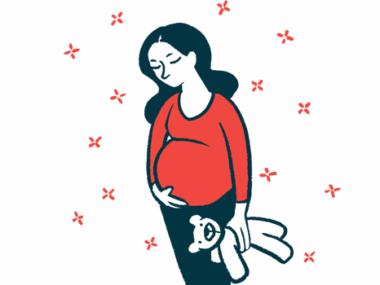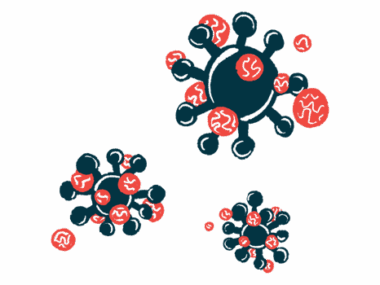UDCA plus phenobarbital safe, effective for infant cholestasis
Combination works better than phenobarbital alone, study finds
Written by |

Combined treatment with phenobarbital and ursodeoxycholic acid (UDCA) is superior to phenobarbital alone at treating cholestasis symptoms, and does so at a faster rate, in newborns, a study found.
“Phenobarbital combined with ursodeoxycholic acid can improve the liver function of children to a greater extent [than phenobarbital alone] in the treatment of neonatal cholestasis,” the researchers wrote, adding that the treatment “does not cause serious adverse reactions, and has good safety.”
The team called for further investigation of the combination for treating neonatal cholestasis.
The study, “Clinical efficacy of phenobarbital combined with ursodeoxycholic acid in the treatment of neonatal patients with cholestasis,” was published in the Arab Journal of Gastroenterology.
Cholestasis occurs when the flow of bile from the liver to the intestines slows or stalls, causing this digestive fluid to build up and leak into the bloodstream. When this happens, bilirubin, an orange-yellow pigment in bile, can cause the skin and whites of the eyes to develop a yellow tint (jaundice). Cholestasis symptoms also include itchiness and pale-colored stools.
Timely treatment is key
Genetic diseases, defects in the tubes that transport bile, or infection may cause cholestasis in newborns.
“The key to [suppressing] the occurrence and development of cholestasis is to reach a clear diagnosis as early as possible and take timely treatment measures,” the researchers wrote.
Neonatal cholestasis treatment often includes medications to manage infection, if applicable, and protect the liver. UDCA, marketed in the U.S. as Actigall, among others, can help with the latter, promoting bile flow and reducing bilirubin levels, and “has been widely used in the treatment of various intrahepatic cholestasis,” the researchers wrote.
Intrahepatic cholestasis refers to slowed or stalled bile flow within the liver.
Physicians may also use phenobarbital for relieving jaundice, but studies suggest this therapy is less effective at reducing bilirubin than UDCA in newborns and infants with cholestasis.
To assess whether combining these medications could enhance therapeutic benefits, the researchers compared effects of UDCA plus phenobarbital combination treatment against those of phenobarbital alone among 100 newborns with cholestasis.
The goal was “to provide a clinical basis for the application of UDCA combined with PB [phenobarbital] for the treatment of infant cholestatic liver disease,” the researchers wrote.
Newborns were admitted to the researchers’ hospital in Nanchong, China, from December 2022 to January 2024. They were randomly assigned to receive either phenobarbital alone or phenobarbital plus UDCA twice a day for 14 days. Phenobarbital was given at a dose of 1-1.5 mg/kg, and UDCA at a dose of 10-15 mg/kg.
Infants were also given vitamin regimens, phototherapy for jaundice, and antibiotics for infections, if applicable.
Newborns in both groups had an average age of about 58 days, and a little over half were boys. Infections were common in both groups, occurring at similar rates.
Results showed that each treatment significantly reduced blood levels of bilirubin and liver enzymes (other markers of liver damage), but this decrease was significantly larger with combination therapy.
Newborns on the combo showed significantly less jaundice, and defecated significantly earlier in the day and more frequently each day than those given phenobarbital alone.
The time for jaundice resolution was about two months shorter in the combination group, a significant difference.
Overall treatment effectiveness was assessed based on a reduction or resolution of symptoms, normalization or near normalization of blood levels of a liver enzyme, and a 50% drop in blood bilirubin levels. The rate of treatment effectiveness was significantly higher in the combination treatment group than in the phenobarbital group (94% vs. 78%).
“This suggests that combined medication can improve cholestasis more quickly and effectively,” the researchers wrote.
A small, similar number of infants in each group experienced diarrhea or rash, but these could be managed with treatment.
“No children in the two groups experienced serious adverse reactions during the treatment,” the team wrote.
Together, the results indicate that combining phenobarbital with UDCA may increase its efficacy for infants with cholestasis.
“In the future, we will include more newborns, conduct a large-sample multicenter study, and conduct a more detailed study on the situation of children with cholestasis with and without infection factors,” the scientists wrote.







